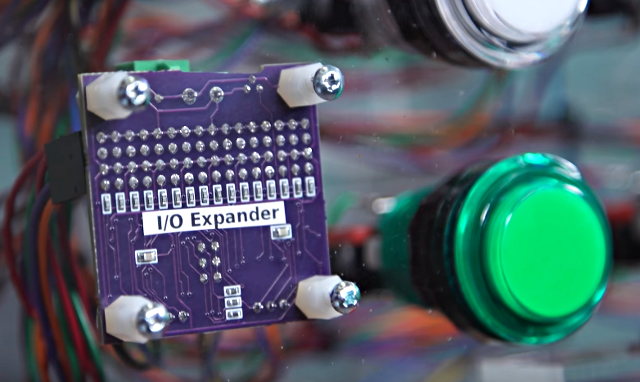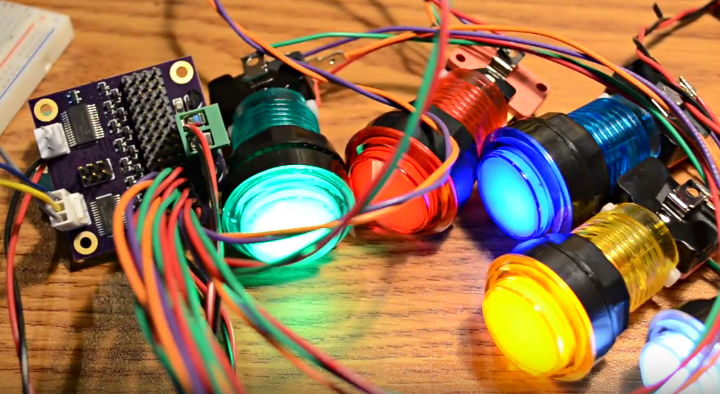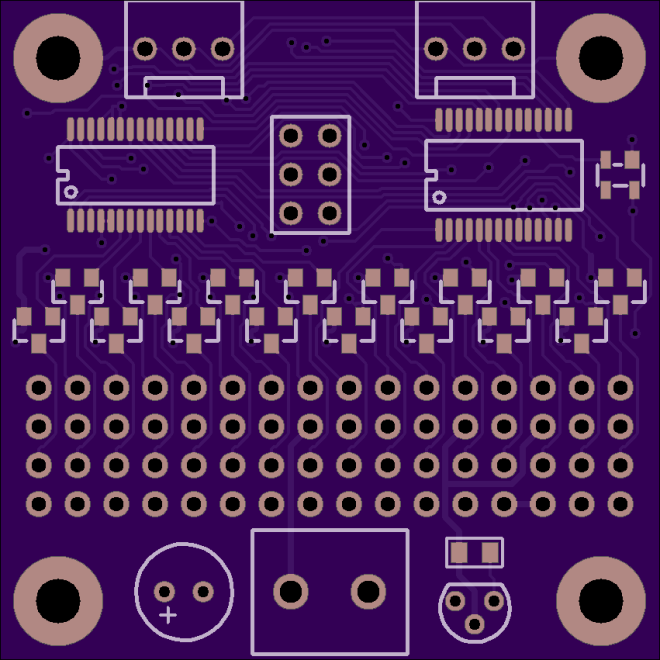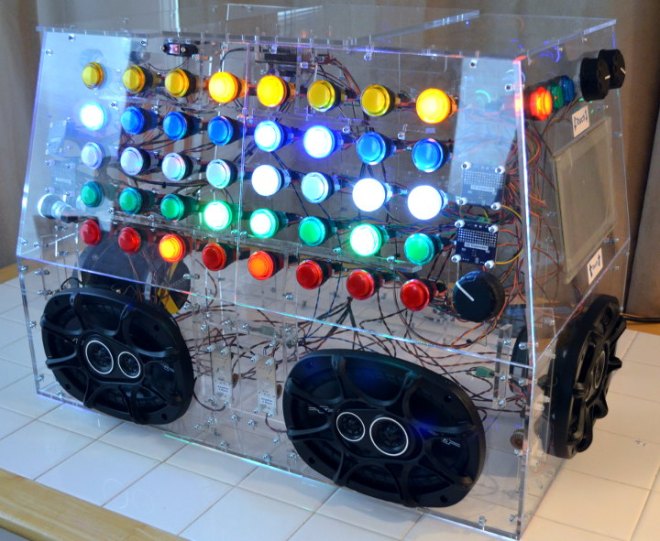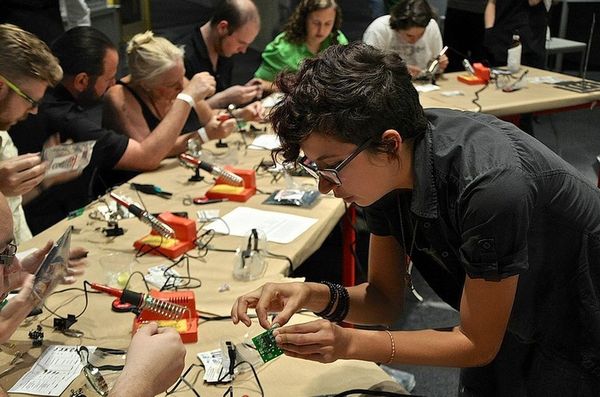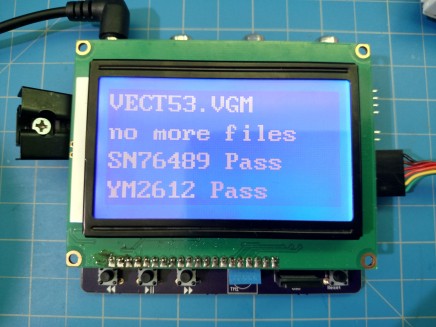General Instrument’s AY-3-8910 is a chip associated with video game music and is became popular with arcade games and pinball machines. The chip tunes produced by this IC are iconic and are reminiscent of a great era for electronics. [Deater] has done an amazing job at creating a harmony between the old and new with his Raspberry…
music
I/O Expander for LED Arcade Buttons
Teensy creator Paul Stoffregen has shared a new project on OSH Park:
I/O Expander for LED Arcade Buttons
The Monolith Synth Project needed to use a large number of these LED lit arcade buttons.
Dimming of the LEDs was required. Initially I considered using this Adafruit 16 Channel PWM board. But the LEDs in these buttons have integrated resistors which require 12 volts, so 16 transistor circuits and another board for reading the switches would have also been needed.
It uses the same PCA9685 chip for 12 bit PWM control on every LED, with mosfet drivers to handle 12V outputs, and also a MCP23017 chip to read the buttons. Every button has a discrete 1K pullup resistor (rather than using the higher impedance on-chip pullups) to help with use in the same cable bundles cross coupling to 12V PWM signals.
Monolith Synth
Four of these boards where used in the Monolith Synth project:
The project is featured in this Tested video:
3D Printing A Synthesizer

From Brian Benchoff on Hackaday:
3D Printing A Synthesizer
Before there were samplers, romplers, Skrillex, FM synths, and all the other sounds that don’t fit into the trailer for the new Blade Runner movie, electronic music was simple. Voltage controlled oscillators, voltage controlled filters, and CV keyboards ruled the roost. We’ve gone over a lot of voltage controlled synths, but [Tommy] took it to the next level. He designed a small, minimum viable synth based around the VCO in an old 4046 PLL chip
The circuit for this synth is built in two halves. The biggest, and what probably took the most time designing, is the key bed. This is a one-octave keyboard that’s completely 3D printed. We’ve seen something like this before in one of the projects from the SupplyFrame Design Lab residents, though while that keyboard worked it was necessary for [Tim], the creator of that project, to find a company that could make custom key beds for him.
Read more on the F0 on Tommy’s blog:
Hello, F0
Build a Synthesizer with Darcy Neal in Chicago
Darcy Neal will lead a workshop in Chicago on building your own synthesizer:
https://www.meetup.com/Solder-Stitch-And-Code/events/238959615/
We’ll learn about some of the building blocks of creating a synthesizer using the 4046 VCO and the classic 40106 CMOS ICs. The 4046 is a well documented and powerful IC that can be turned into a modular synth voice with just a few added components. Participants will learn to solder together their own prototyping PCB, build a circuit on a breadboard from a schematic, experiment with sensors, and learn the basics about how to produce custom circuit boards using design software like Kicad and Fritzing. No experience is necessary, but basic electronic knowledge or a strong interest in synths will be helpful.
Making a USB DAC + Headphone Amp [update]
It’s been a while since I last wrote *ahem* lies *cough* on this project. I am currently a little bit torn whether I should keep writing it here or start posting to my new hackaday.io presence… Anyway here is a brief update: TL;DR I now have a working standalone unit — USB in, headphone out […]
via Making Myself a USB DAC + Headphone Amp — Interim Update — Frog in the Well
MIDI Guitar Pedals
Ever since Jimi Hendrix brought guitar distortion to the forefront of rock and roll, pedals to control the distortion have been a standard piece of equipment for almost every guitarist. Now, there are individual analog pedals for each effect or even digital pedals that have banks of effects programmed in. Distortion is just one of…
Sega Genesis Chiptune Synthesizer
Jarek Lupinski created this board that uses the actual Sega Genesis sound chips to play chiptune files:
Sega Genesis Native Hardware Chiptune Synthesizer
The VGM file format stores instructions for sound chips, and VGM files for many popular games can be found online. An Atmega1284p microcontroller will read these VGM files from an SD card and translate them into signals to send to the onboard YM2612 and SN76489 chips. These chips were used by the original Sega Genesis hardware to make the sound effects and music in Genesis games.


